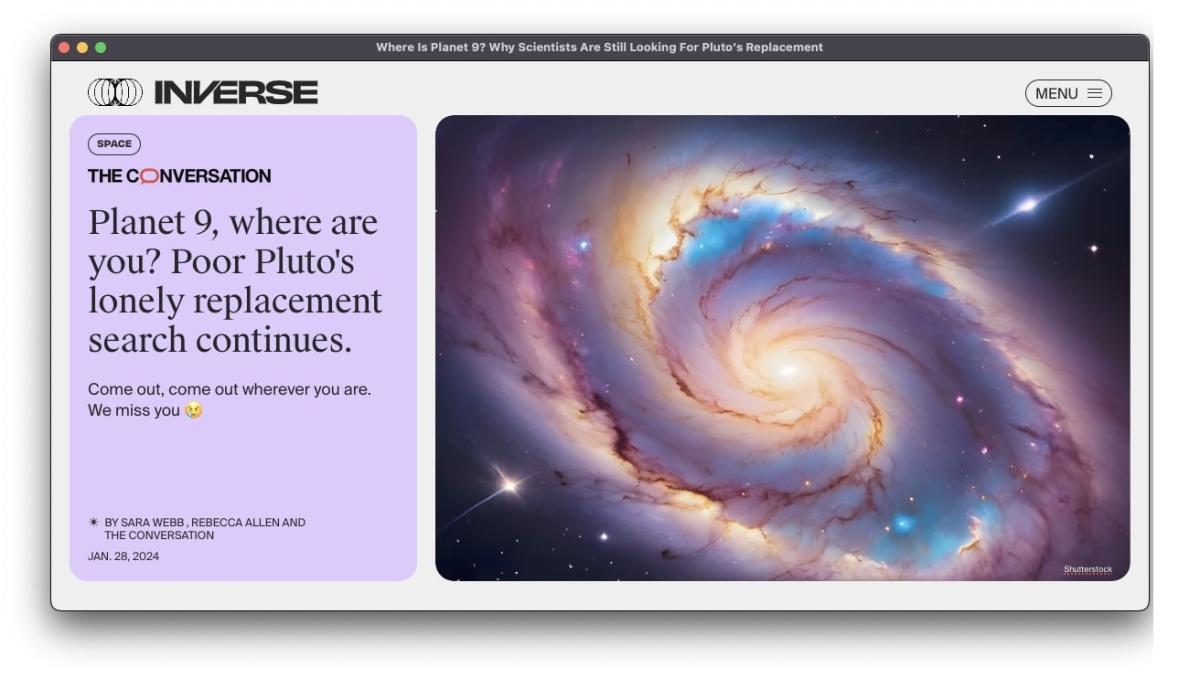Planet 9, Where Are You? Poor Pluto's Lonely Replacement Search Continues.

Where Is Planet 9? Why Scientists Are Still Looking For Pluto’s Replacement
Ah, the traumatic day in 2006 when Pluto got kicked out of the "planets club." The horror! Even 11-year-old Sara passionately protested, but older Sara now accepts Pluto's dwarf status. And who can forget the PR disaster by astronomers? Bravo, folks.
Fast forward, Eris shows up, smaller than Pluto but heavier. Suddenly, we're drowning in dwarf planets – five to be precise. Turns out, Pluto was just too messy and didn't clean up its celestial neighborhood.
But wait, there's more! Two astronomers claim there's a mysterious ninth Planet out there, 10 times Earth's mass. However, good luck finding it; it's 600 times fainter than Pluto, and we're not even sure where to look.
Now, let's chat about exoplanets. We can't directly see them, but hey, the James Webb Space Telescope is on it. No water vapor yet, but we did find some cool quartz nanocrystals in a hot Jupiter's clouds. The hunt for life continues – maybe 2024 will bring water vapor and a surprise ninth planet. Stay tuned for the cosmic drama!
In August 2006, Pluto was controversially reclassified as a dwarf planet, sparking protests and disappointment among many, including the author Sara who vividly recalls the event. Rebecca, another individual, was more concerned with how the astronomy community handled the public relations aspect of Pluto's re-designation. The discovery of Eris in 2005, with characteristics similar to Pluto, prompted the International Astronomical Union to establish criteria distinguishing planets from dwarf planets. Pluto failed to meet the third criterion, as it hadn't cleared its neighboring region of similar-sized objects.
The article highlights advancements in astronomy, particularly the detection of dwarf planets and the realization that their motions around the Sun didn't align with expectations. In 2016, astronomers Konstantin Batygin and Mike Brown proposed the existence of a ninth planet in the solar system, ten times the mass of Earth and located 90 billion kilometers away. However, skepticism remains, and the elusive nature of this theoretical planet, potentially 600 times fainter than Pluto, poses challenges for detection.
Despite our ability to observe galaxies billions of light years away, finding a ninth planet within our solar system is complicated due to its dimness and uncertainty about its location. Recent efforts using the Atacama Cosmology Telescope provided potential candidates for further investigation.
The article transitions to the search for exoplanets, planets outside our solar system. Traditional methods involve detecting gravitational interactions or using the transit method, where a planet passing in front of its star causes a small reduction in light. Telescopes like Kepler and TESS have discovered thousands of planets, but they can only determine size and distance. The James Webb Space Telescope (JWST) is introduced as a promising tool for studying exoplanet atmospheres. Despite impressive findings, the quest for signs of water vapor, a crucial element for life, continues.
The JWST's successful first year and a half includes the detection of molecules in exoplanet atmospheres. Notable discoveries include quartz nanocrystals in the atmosphere of WASP-17 and signs of methane and carbon dioxide on the super-Earth K2-18b. The article expresses hope that the JWST might uncover signs of water vapor in an exoplanet atmosphere in 2024, hinting at exciting developments in planetary studies. The possibility of a surprise ninth planet adds an element of anticipation, echoing the initial shock of Pluto's reclassification in 2006.
Source




